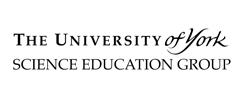Changes of state and the particle model
Here are some memorable demonstrations and great practical activities which explore states of matter and particle theory, as well as some puzzling ideas to really make your students think.
Visit the practical work page to access all resources and lists focussing on practical work in secondary science: www.nationalstemcentre.org.uk/sciencepracticals
- ALL
- Teacher guidance
- Textbook
- Video
- Article
- Experiment
- Interactive resource
- External link
- Other
Teacher guidance
Stuff and Substance: Ten Key Practicals in Chemistry *suitable for home teaching*
A really useful book from the Science Enhancement Programme about particles and activity A2 is particularly recommended to help teach this section of the keystage three curriculum. The experiments and demonstrations are simple but the ideas behind them are fundamental for a good understanding of chemistry at any level.
A well designed sequence of activities prompts students to think deeply about what is going on when liquid water turns to steam. There are helpful and detailed teacher notes starting on page 16 of the booklet (page 16/65 if using the pdf file) although teachers may well find that they want to read through the earlier sections of the booklet too.
Both word and pdf versions of the student worksheets are available and teachers may also like to use some of the slides in the presentation (part 1) to help with explanations.
The resource listed below is a website covering the same material which could also be very helpful.
Textbook
The Atmosphere
This is a very simple experiment to carry out, students (of all ages) invariably enjoy it and it teaches much about the nature of matter: three really good reasons to carry out the collapsing can practical. This is a variation of the more usual teacher demo where a sealed container of condensing steam causes the container to collapse with a bang. In this version, students can carry out the experiment themselves.
Practical tips:
·
Have just one full drinks can for the comparison before and after opening (or miss this bit out altogether)
·
The normal sized soft drinks can (330ml) works fine, small cans aren’t necessary.
·
Students can work in pairs but it’s good if they can each have a can to collapse
·
Students can find it difficult to know how much water to put in the can so it’s suggested that they use a measuring cylinder to put in approximately 10cm3
·
To avoid burning the paint on the can, make sure the cans are clamped at the top
·
Use washing up bowls, half full of cold water shared between two groups of students to do the collapsing in
·
You should get a satisfying, and quite loud “whomph” sound as each can collapses
·
Be prepared to have to dry the benches at the end of the activity, there can be quite a lot of splashing!
You’ll find detailed teacher notes on page 38/69 of the booklet (page 50/84 in the pdf file) and a student worksheet (student sheet 3.3) on page 50 (62/84) There are some other simple experiments on the previous page that you may like to try too and there is some text based follow up work on subsequent pages.
Drawing an outline of three cans on the board and asking students to complete them showing particles of water and air can be very helpful. You can show the can before heating, when full of steam and after heating. Don’t forget to include the particles of air outside the can! Students should then be able to use the final diagram to explain why the can collapses.
Video
Dry Ice Demonstration
This is a very memorable demonstration and it’s well worth doing if you can get hold of dry ice. The film does include some ideas about how to obtain dry ice but if all else fails try searching on the internet for dry ice cleaning companies local to you. Of course, having got your dry ice, you’ll be able to do lots of other activities with it too and with several other classes: its sheer memorability makes it worth the money.
Before carrying out the demo as shown here, it is recommended that a very small amount of dry ice is placed on benches so that students can literally watch it “disappear” in front of their eyes. Warn students not to hold it though as it will burn their skin and be particularly careful that it can’t fall into their laps. You might want to introduce students to the concept of sublimation and explain that carbon dioxide is one of very few chemicals that turns directly from a solid into a gas without going through the liquid phase.
Instead of carrying this out as a large scale demonstration, it is perfectly possible for students, perhaps working in pairs, to prepare solutions themselves that are just alkaline (ie the indicator has only just turned purple) using 250cm3 beakers. The teacher can then walk around the classroom dispensing the dry ice directly into each beaker.
Life in the freezer
Measuring the rate at which ice melts forms the basis of this very visual practical which can be used to develop the investigative skills of students. As there are several different ways in which the experiment can be carried out students can choose their own equipment and develop their own method. Teachers might choose to concentrate on one or two parts of “working scientifically” part of the curriculum such as:
·
make and record observations and measurements using a range of methods for different investigations; and evaluate the reliability of methods and suggest possible improvements
·
pay attention to objectivity and concern for accuracy, precision, repeatability and reproducibility
It works well as a stand-alone activity but was written as part of a suite of materials for the National Space Centre to accompany their film about the search for alien life called We Are Aliens. This very engaging space context is likely to enthuse the students and to that end teachers may also like to use the show one or all of the very short clips from the film to introduce the topic – see resource below.
Article
Try This - Pouring a Gas
A striking demonstration that shows that gases, as well as liquids, can be poured. This article is pretty self explanatory but here are a few tips:
·
Practise before you do this for the first time in front of a class to make sure you’ve got the amounts of bicarbonate and vinegar right
·
A dilute acid (eg 0.2M hydrochloric) works just as well as vinegar
·
Carbon dioxide is heavier than air so you won’t lose much from the jug even if you don’t keep your hand over it
·
You can extend the demo by trying to re-light the tea light – since the glass is still full of carbon dioxide it won’t light. However if you remove the candle from the glass it will light easily.
Experiment
Interactive resource
Stuff and Substance
A website produced by the Science Enhancement Programme that links to the resource detailed above.
External link
Chocolate and egg
Everyone knows that if you heat a solid it melts to form a liquid and everyone knows that if you boil an egg for long enough you will hard boil it. Not so many people have put those two ideas together and wondered why liquid eggs become solid when you heat them rather than the other way around.
This demonstration works best at the end of a topic on states of matter when student’s understanding of changes of state is pretty secure. It’s included because it’s thought provoking and should get students asking questions. This is probably not the place to go into a full blown explanation of protein structure and denaturing but a diagram showing long molecules getting tangled up should help students to understand and appreciate that science is more complicated that our teaching sometimes makes it look.
Other
Space - lesson starter movies
Three short film clips from the National Space Centre We Are Aliens film which can be used to introduce the activity shown above.







